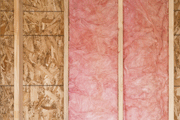How Do You Know Which Type Of Insulation Is Right For Your Home Improvement Job?
You've made a wise decision if you've decided to purchase insulation for your home improvement project. After all, you will preserve your investment while saving energy costs all year round.But how do you know which type of insulation to buy? And isn't there more to insulation than just picking out a certain number of rolls of the ubiquitous, pink, fluffy stuff you see at home improvement stores?Demystify the process by learning a little about the various forms of insulation and the materials that are used to make them:
Cellulose insulation is blown into walls and ceiling cavities. It can be installed into wall cavities through a series of small holes drilled in the wall, which means that it causes minimal disturbance during remodeling. It is not suitable for application below grade or in other locations where it would be exposed to moisture.
Cotton batts can be rolled out between open roof rafters, ceiling joists and wall studs. Loose fill is also suitable for attic floors and wall cavities. As with any natural material, cotton insulation works best in areas where there is very little to no moisture.
Fiberglass insulation is well-suited for wall cavities or attic floors and ceilings. Batts and boards require open walls, and boards can be used in interior basement spaces.
Foam is best for interior basement walls, beneath siding and attic ceilings, and it can be sprayed through small holes in walls.
Mineral wool is available in batts and loose fill, and can be used anywhere inside a home, though only specially made mineral wool products should be used below grade. It can release more eye, throat and skin irritants, but mineral wool is also more durable.
If you decide to purchase and install your own installation -- and attic insulation is by far the simplest, followed by exterior walls -- make sure to purchase enough. Or let the pros at Air Assurancehelp you every step of the way -- from measuring, to insulation selection, to installation. Either way, insulation will help keep your warm home this winter while cooling down your energy bills.Our goal is to help educate our customers about energy and home comfort issues (specific to HVAC systems). Air Assurance services Tulsa, Broken Arrow and the surrounding areas. Visit our websiteto see our current promotionsand get started today! Insulation image via Shutterstock

